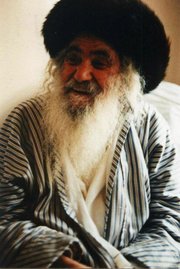Osowiec - Part II, a little background information
Chlorine Gas
Chlorine reacts with water and water vapor to produce hydrochloric acid, which when it comes in contact with the human body leads to irritation and burns of the eyes, nose and throat as well as spasms of the chest. With prolonged inhalation, the hydrochloric acid collects in the lungs and consequently eats away at the tissues, leading to death from asphyxia. The most affected by chlorine are:- Those closest to the ground (wounded on stretchers, soldiers in trenches) as chloriene is heavier than air and collects near the ground and in low places.
- Those trying to run away from the cloud mainly due to the heavier and more rapid breathing done by running men.
The beauty of technicalities
All the Allies, including Russia were completely unprepared for the use of chemical warfare. Since the use of chemical shells was prohibited by the Hague Convention of 1899, all chemical mask design and manufacturing was stopped as it was seen to be a waste of money. By 1915, both sides were still trying to at least formally hold to the Hague Convention agreements. However, Germany found a loophole by using gas canisters instead of shells, as the pre-war resolutions did not prohibit their use. Fortuitously for Germany, it had a huge supply of chlorine, which was a byproduct of the manufacturing of chemical dyes, one of Germany's leading industries.How to make a bad situation even worse
After the first gas attacks, all countries began to manufacture defenses at a feverish rate. In Russia, the manufacturing was done by a variety of volunteer organizations. As nobody knew how to make a gas mask, the quality of the first batches of masks was poor. They did not lie close to the face and were too thin, at best protecting from gas for just the first few minutes. Very few protected the eyes. A more serious error was the choice of pure solution of hyposulfite to soak the masks. Hyposulfite does actively consume chlorine per the formula:Na2S2O3 • 5H2O + 4Cl2 → Na2SO4 + H2SO4 + 8HCl
However, following the chain reaction, it produces toxic sulfur dioxide gas:
Na2S2O3 + 2HCl → 2NaCl + 2H2O + SO2
Na2S2O3 + H2SO4 → Na2SO4 + H2O + SO2 + S
Therefore, ignorance of basic high school chemistry lead to the situation that the first party of gas masks sent to the front in the spring and summer of 1915 not only did not protect from chlorine, but lead to a secondary poisoning from sulfur dioxide, further strengthening the effectiveness of the gas attack. The mistake was realized quite quickly and consequently baking soda was added to the mixture to neutralize the solfur dioxide. However, at that point, the soldiers lost faith in the masks. Often they would either throw them away or even mockingly hang them on trees as decorations.
[information paraphrased from the Russian wikipedia article on the Osowiec gas attack]


0 Comments:
Post a Comment
<< Home